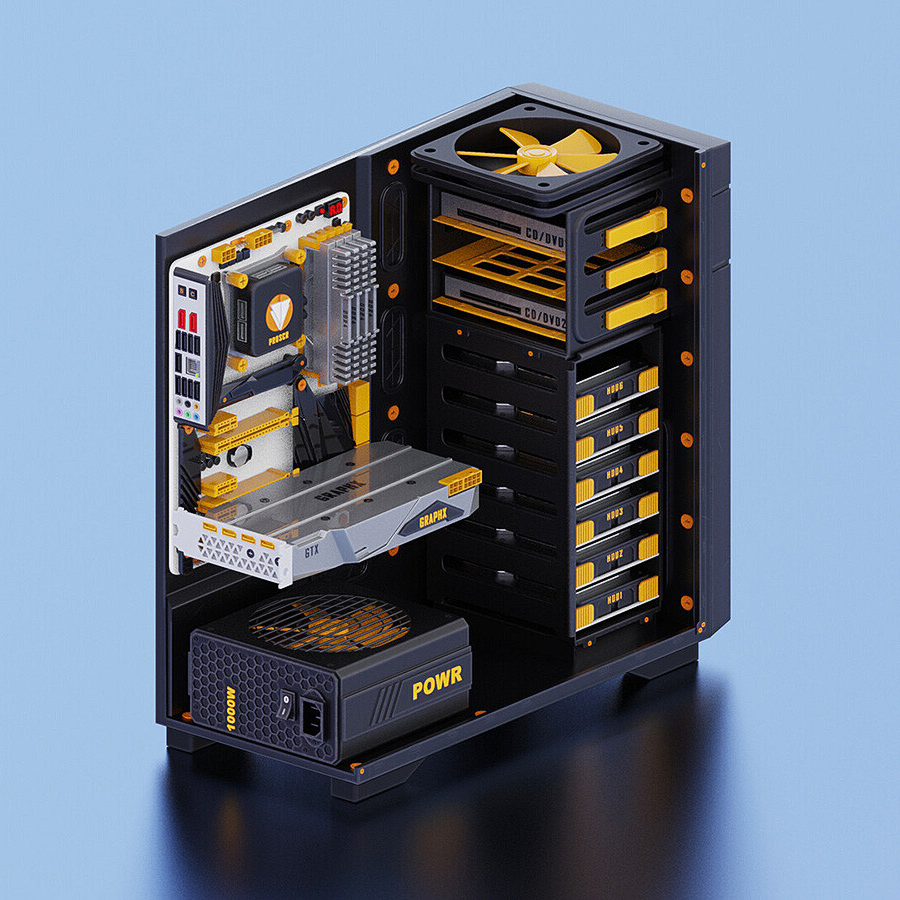… caused by my own tinkering.
Edit: SOLVED! simply disconnecting the drives and then adding them one by one (starting with the windows drive, dont know if thats important) did the trick
(Sorry if this is the wrong community for HELP ME posts like this, couldnt find one that fit the bill better)
So recently i made up my find about switching my self-build from 2018 from win10 to linux mint, though i first wanted to try it out in dual-boot. I created a bootable usb and started the installation process to a partition on an ssd thats seperate from the hdd that holds my windows installation. Installation worked out fine, PC powered down from live usb mint and booted into mint from my petition (worked fine). Afterwards i powered it down to check if i could access windows.
After turning it on, instead of showing the GRUB OS selections screen, it just showed a GRUB command window, and my keyboard wasnt recognized.
Powered down, disconnected the ssd in hopes of forcing windows to start, no luck. Entering BIOS via f2 or del on startup didnt work either (probably because fast boot was enabled), tried every available usb-port for the keyboard to either get into BIOS or at least get GRUB to respond. Nothing.
After shopping for solutions online, i cleared CMOS via the button on the mobo. I hoped it would either help the keyboard get recognised by GRUB, or at least deactivate fast-boot. But after powering the pc on again, my screen stays blank and the indication LEDs DRAM and BOOT are glowing.
I already tried taking out one of the two ram-sticks and placing the remaining one in each of the slots, then did the same withe other stick. No effect on the DRAM LED.
Im not quite at wits end here, but i thought before i continue to haphazardly apply fixes found online (and probably making it worse) i would look wether anybody here has good ideas for what steps to take next.
Here is my hardware:
Mobo: nzxt n7 b550
cpu: amd ryzen 5 5600x
gpu: amd rx 580 sapphire nitro+
psu: be quiet pure power 11 500W
ssd: kingston 240gb (linux boot)
hdd1: barracuda 1tb (win10 boot)
hdd2: wd blue 2tb (mostly games and stuff)
check the manual for your motherboard for the led indicators.
Check which key combo enters bios - from the manual!
Strip down the machine to bare essentials, no disk, one stick of ram, remove the video card if you have onboard video, etc. Start trying to get the most basic things to work before adding the next thing
Try swapping the power supply Try swapping the RAM stick, in another slot, different stick, etc
Simple, yet effective! This did the trick. Removed all but 1 RAM and cpu, could enter bios again. Added the gpu, still worked. Then first i added the drive with the windows partition, could boot into windows again. Afterwards all the other drives, and if i select ubuntu in bios boot order, im shown the GRUB that lets me select my OS, and both OS work without further problems.
Thank you very much!
From the manual:
The Clear CMOS button located on the rear I/O can be used to revert BIOS settings to default. To clear CMOS, turn off the power and remove the AC power to the power supply. Allow 30 seconds to ensure no standby power exists. Press and hold the Clear CMOS button for 3 seconds.
Did you do all of that? I have read elsewhere that reset buttons sometimes don’t work the first time (or at all), so make extra sure you’ve cleared out all the power from the motherboard and CMOS. Some people have even had to completely disconnect the battery.
If you’re sure that you’re sure you’ve cleared the CMOS, then you should move on to testing the problematic parts one by one. If that CMOS step didn’t fully discharge the power and force a reset to default, it could be that the saved settings got fucked up, and it’s now trying to use corrupted settings (instead of the default fallback ones).
If that doesn’t work, you might try to see if you can do a BIOS upgrade via flashback, which might reset your BIOS settings to default, after which you can maybe get in and do more troubleshooting.
https://support.nzxt.com/hc/en-us/articles/11652846587803-Updating-your-NZXT-Motherboard-BIOS
After shopping for solutions online, i cleared CMOS via the button on the mobo. I hoped it would either help the keyboard get recognised by GRUB, or at least deactivate fast-boot. But after powering the pc on again, my screen stays blank and the indication LEDs DRAM and BOOT are glowing.
I had to boot from a USB stick and regenerate UEFI entries after things like that. Though it specifically said it couldn’t boot.
What does your motherboard’s manual say about this pattern of LEDs?
Try booting a live OS and running memtest? (disconnect all bootable drives first)
Can you double-check your keyboard works with other devices?
Try fully disconnecting the power from the wall, and remove the bios battery for a while and then try booting again. Sometimes cmos reset buttons don’t fully work. Assuming it does boot make sure you go into the bios and fix the ram settings. Ryzen 5000 series isn’t as picky about ram as older ryzen systems, but you do want to make sure the ram speed and timings are correct because the default is rarely correct.
Yeah no idea

